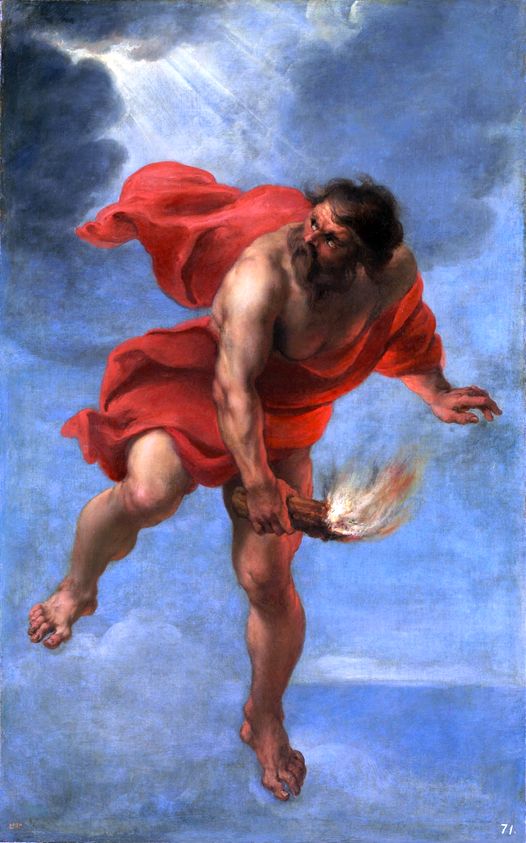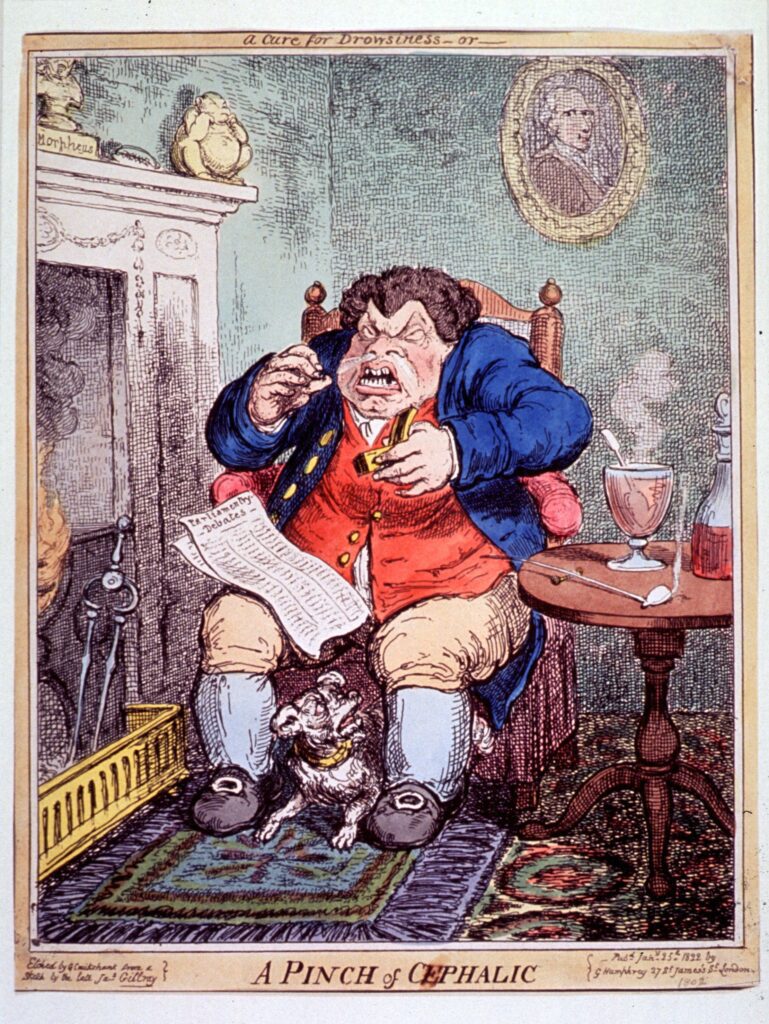Saty Satya-Murti
Santa Maria, California, United States

Sneezing, or “sternutation,” has deep roots in mythology and culture. Often associated with life and health but also with death, various cultures have considered sneezing a good or bad omen. Blessing the sneezer with a long life after they sneeze has long been a familiar, worldwide practice. Depending on the circumstances and the time of the day, a sneeze may be interpreted as either auspicious or ominous. A robust sneeze may indicate vigor or portend an impending respiratory illness.1
Light-induced sneezing
Exposure to bright lights, including sunlight and ophthalmological examinations, may elicit a sneeze response in some people. This photic sneeze response, or reflex, is far less common than sneezing from dust, irritants, pollen, or infectious rhinitis. In 1875 Spencer Watson, a British surgeon, noted that “the sudden stimulus of strong light” after “comparative darkness … sometimes excites a fit of sneezing.” In his book Diseases of the Nose and Accessory Cavities, he devoted five pages to the general topic of sneezing, describing the movements observed during a sneeze. Photic sneezing, however, was not his chief concern.
Since then, the literature has recorded scattered case series of photic sneezing in individuals and families.2 These discuss the neurological origins of sneezing, identifying the optic nerve and the first division of the trigeminal nerve as the afferent arcs, and the vagus nerve and respiratory motor nerves as the efferent mediators. The response tends to cease after a few initial bursts, possibly due to a polysynaptic pathway. A recent review by Petroianu traces the history of the photic sneeze reflex.3 The prevalence of photic sneeze response varies, depending on the gender and race of the person interviewed. Between 16 and 28% of those surveyed have experienced light-induced sneezing. In some families, it is a dominant trait and has received the catchy title of ACHOO syndrome (reflex/Autosomal dominant Compelling Helio Ophthalmic Outburst).4 Photic sneezing at inopportune moments, such as piloting a plane or driving, may have dangerous consequences. But often it is considered to be nothing more than an oddity.
Prometheus initiates a solar sneeze
Two millennia before Watson’s brief note in 1875 about the “morbid sensitiveness” of some persons to bright light, ancient Greek mythologists were aware of light-induced sneezing. Diverse mid-nineteenth century newspaper columnists, as well as Knowlton (1910) and Pease (1911), had described independently the myth that a “sternutation” from stolen sunlight had animated a clay human figure.5 These authors were historians or chroniclers; they did not identify this response as a neural reflex, nor did they delineate its pathways. They were, however, cognizant of the solar sneeze phenomenon.
The mythological reference to light-induced sneezing finds hardly any mention in the medical literature.6 Greek legends associate one consequential act of their Titan god, Prometheus, with sneezing. During a feast intended as a celebration for the creation of mankind, Prometheus tricked Zeus into eating the less desirable parts of a killed animal, while reserving the better parts for humans. Zeus was angry and reclaimed the privilege of fire from humanity as a punishment for this trickery. Prometheus, in his quest to restore the lost privilege, stole the rays of the sun from Zeus. Prometheus had created an exquisite likeness of a human form from potter’s clay. Against the warnings of Zeus, he carried a vial (“phial”) of fennel stalk up to the bright and speeding chariot of Zeus. He stole some of its rays, bottled them inside the stalk, and brought them back to his clay figure. He exposed the vial of bright solar rays (celestial fire) to the statue’s nostrils, causing it to sneeze and come alive. Joyous life, prosperity, and the benefits of fire enveloped humankind and the earth. Zeus, who had long despised the idea of prosperity for humans, punished Prometheus by having Hephaestus shackle him to a rock where a vulture ate Prometheus’s liver daily, only for the organ to be regenerated at night and eaten again the next day. He had to endure this agony for thousands of years until Heracles (Hercules) killed the bird and unshackled Prometheus.
Other sun and sneeze narratives

A sneeze may serve as a prelude to regaining alertness from a sleepy state. A caricature by a James Gilroy (1756–1815), a well-known British political cartoonist, shows a corpulent man sneezing after inhaling snuff (also called a “cephalic”), apparently as a cure for drowsiness. It is tempting to speculate whether the clay model of Prometheus, already alive, was simply drowsy, and the sunshine served as the equivalent of a smelling salt. Keen observance may well have informed the literary imagination of ancient Greek storytellers. Not only did they recognize the seemingly uncommon sneeze reaction, but also hinted at the remarkable potential of hepatic regeneration.7
In his 1911 thesis “The Omen of Sneezing,” Pease mentions a then-contemporary Persian practice that took place before the start of a journey. The ill omen of a solitary sneeze prompted them to “stare hard at the sun” to induce additional sneezes to neutralize the first sneeze. If unsuccessful, they would abandon the planned journey to avert a catastrophe.
Astronomers use the phrase “solar sneezing” as a metaphor for the periodic flares of electromagnetic radiation emanating from the sun.8 These high energy particles often erupt away from the earth, but may at times reach the earth’s geospace, disrupting communication and power grids and igniting fires. Such catastrophic events occurred in 1859 and 1921. The timing of the next earth-bound sun sneeze is uncertain. Will that visit bring a Promethean benefit to our planet, or become a calamitous event?
End notes
- Knowlton, Sharper. 1910. Origins of Popular Superstitions and Customs. Gale Research Company. https://onlinebooks.library.upenn.edu/webbin/book/lookupid?key=olbp21326; Pease, Arthur Stanley. 1911. “The Omen of Sneezing.” Classical Philology 6 (4): 429–43. https://doi.org/10.1086/359578;
- Watson, William Spencer. 1875. Diseases of the Nose and Its Accessory Cavities, (p343), London, Lewis. http://archive.org/details/diseasesnoseand00watsgoog; Semes, Leo P., John F. Amos, and John W. Waterboro. 1995. “The Photic Sneeze Response: A Descriptive Report of a Clinic Population.” Journal of the American Optometric Association 66 (6): 372–77; Song, Murat, and Camal Cing. 2009. “Sneeze Reflex: Facts and Fiction.” Therapeutic Advances in Respiratory Disease 3 (3): 131–41. https://doi.org/10.1177/1753465809340571. Other publications, including a first case series by Sedan in 1954, refer to this phenomenon. Some are short reports, and the case series by Sedan, J. 1954 Photo sternutatory Reflex. Rev. Otoneuroophthalmol 26: 123-126, is difficult to find in full text.
- Petroianu, Georg A. 2022. “Photic Sneeze Reflex.” Advances in Historical Studies 11 (4): 196–215. https://doi.org/10.4236/ahs.2022.114017.
- Hyden, D, and S Arbinger. 2009. “On Light-Induced Sneezing.” Eye 23 (11): 2112–14. https://doi.org/10.1038/eye.2009.165; Langer, Nicolas, Gian Bela, and Lutz Janke. 2010. “When the Sun Prickles Your Nose: An EEG Study Identifying Neural Bases of Photic Sneezing.” PLoS One 5 (2): e9208. https://doi.org/10.1371/journal.pone.0009208.
- Daily Evening Bulletin. 1867. “A Chapter on Sneezing,” February 4, 1867; Portland Transcript. 1874. “The Sneeze,” September 5, 1874; Manchester Courier and Lancashire General Advertiser. 1885. “The Sneeze,” July 4, 1885; Garcia-Moreno, J.M. 2006. “Relleno Fixico de Stormed o Syndrome de Tornados Helio Fortalices Incoercibles Autosómico Dominant.” Neurologia, (21): 26-33.
- Jackson, Jake, ed. 2022. Greek Myths & Legends: Tales of Heroes, Gods & Monsters. Collector’s edition. London: Flame Tree Collections; March, Jennifer R. 2014. Dictionary of Classical Mythology. Second edition. Oxford: Oxbow Books; Grimmel, Pierre, and Stephen Kershaw. 1991. The Penguin Dictionary of Classical Mythology. Penguin Reference Books. London, England; Schwab, Gustav. 1946. Gods & Heroes; Myths & Epics of Ancient Greece. Introduction by Werner Jaeger. Translated by Olga Marx. New York: Pantheon; Lawrence, Robert Means. 2015. The Magic of the Horseshoe: Folklore, Myth & Superstition. Hesperus Classics.
In my research I have not been able to find any published recognition or link between the story of the Prometheus man coming to life after a sneeze and the medically recognized phenomenon of photic sneeze reflex. - Piperamide, Niki. 2019. “Hepatic Regeneration in Greek Mythology.” World Journal of Meta-Analysis 7 (3): 77–79. https://doi.org/10.13105/wjma.v7.i3.77.
- Daglish, Ioannis A., Christos Katsiavrias, and Marina Georgiou. 2019. “From Solar Sneezing to Killer Electrons: Outer Radiation Belt Response to Solar Eruptions.” Philosophical Transactions. Series A, Mathematical, Physical, and Engineering Sciences 377 (2148). https://doi.org/10.1098/rsta.2018.0097.
SATY SATYA-MURTI, MD, FAAN, is a clinical neurologist and health policy consultant. Following retirement, Saty has spent time researching cognitive biases, the social underpinnings of clinical medicine, Progressive Era medicine, and forensic sciences. He enjoys grandparenting, solar cooking, and volunteering.
Highlighted in Frontispiece Volume 15, Issue 4 – Fall 2023

Leave a Reply